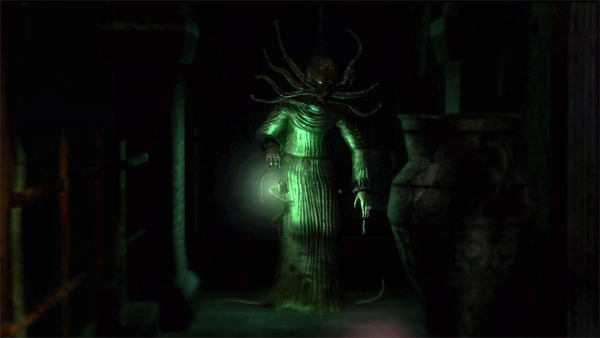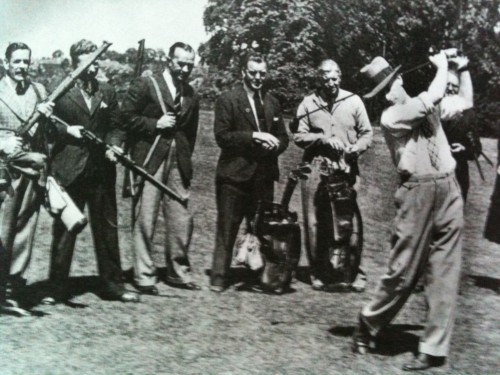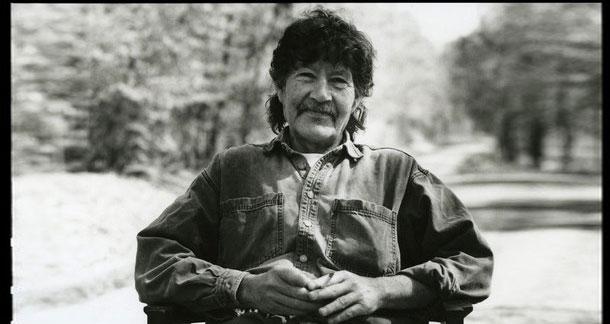
Revisiting The Brutal Language of Love
The theme for my graduate workshop this semester is writing love and sex into fiction. With each story or book we read, I ask students to think about what those texts say about love and sex because there are so many different ways to approach these topics. By the end of the semester, I want them to answer the question, “What is a love story?” I also want them to find new ways to write love stories. So far, it has been an exceptional class and our classes have been so invigorating because the students are really getting into what we’re reading and having killer discussions. More importantly, their writing, both critical and creative, has been fantastic. We just finished workshopping their first stories and every student surprised me with how they interpreted this idea of a love story.
One of the books we’re reading is Alicia Erian’s The Brutal Language of Love, and as we discuss the book, I am reminded of the brilliance of this collection. I assigned this book for lots of reasons, but mostly because Erian’s writing here responds to many dominant cultural narratives about love, sex, and gender, in complex, original ways. Oftentimes she writes these strange women who openly display their damage without apology but we never learn why the way they are. So often in our fiction we explain a character’s motivations or explore the underlying pathology. In most of these stories, there’s none of that. We have to simply accept the characters as they are. Many of the stories also approach love and sex through narrators who possess a sense of wry detachment and intimate self awareness. I don’t know of any writer who conveys the observations of a young woman with the skill of Erian.
A Man Reads Men by the Lips of Women
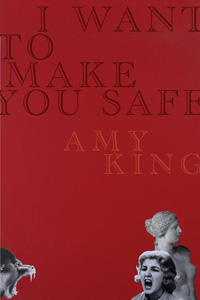 I Want to Make You Safe
I Want to Make You Safe
by Amy King
Litmus Press, 2011
87 pages / $15 Buy from SPD Books
Amy King is doing God’s work. Of course, I don’t mean God in a traditional Christian way; I mean God in the way that King speaks of God in her recent book, I Want to Make You Safe:
of our collective minds
of our collective wing wax
of our flights past time zones.
King’s poetry—its meandering syntaxis, its resistance to singular meanings, its mysterious connections and lack of connections—opens up the mind to unexplored avenues of thought. I also find King doing this work through her editing, specifically on the journal, Esque, which she co-edits with Ana Božičević, in which they bring together a wide array of contemporary poets and prose experimentalists, people like Jennifer Karmin, Cara Benson, Cynthia Arrieu King, Ching-In Chen and more. The new edition alone should get her a seat in heaven. If you haven’t seen the third issue, called Revolutionesque, you should definitely check it out.
February 24th, 2012 / 1:00 pm
Vidja Games and Mystery
Narrative is rarely any fun without mystery. You can get mystery in a lot of ways. In a creative writing class my senior year at Butler, my teacher Susan Neville passed a story around the room. I don’t remember what the story was. I think it was about two people in a car. I think they were young people. Susan pointed out that though the characters were taking turns speaking, neither one was responding to what the other person had to say. She said that if you listened to the way people really speak to each other, this turned out to be mostly true. We don’t listen: we wait for our turn to speak. What she didn’t point out was that this stood in stark contrast to the way college students tend to write, wherein a pair of extremely attentive conversationalists trade ideas and information in the collaborative pursuit of synthesis, consensus, etc. What she also didn’t point out was the way that this corrodes the mystery of the story: when two characters with ostensibly different interests agree completely on the direction of a conversation (or even on the terms of their own disagreement), the writer’s intent becomes glaringly obvious. So there is one way of creating mystery. Make your characters talk past each other.
Another way is to present an image so breathtaking, so rich with implications, and yet so beyond our grasp, that mystery can’t help but form. Another way is to create a character who makes interesting decisions that make us wonder why they made the decisions. Another way is to make thoughtful, sublime choices in language. Another way is to make thoughtless, sublime choices in language. And so on. Another way, but often a rather blunt instrument, is simply to withhold information. If your reader doesn’t know what’s going on, who’s doing it, or why, that counts as mystery, right? Well, sure. But maybe not the good kind.
The old Nintendo games tended to be naturally mysterious. There were many reasons for this. One is the graphical limitation of the system. NES games could only display a small number of colors with limited animation. It didn’t have a lot of pixels to work with, either — it was a very low-res system. This made the system’s representations abstracted, and, as such, a little mysterious. Sometimes (often) you literally couldn’t tell what you were looking at. READ MORE >
The 3rd Man by Graham Greene
The ocean is full of flowers that betray most readers. Or Graham Greene’s adulterations of poetic form in The Third Man are particularly well suited to his subject—racketeering. As we all know, on March 13, 1938, Germany took over Austria (termed the Anschluss)–a contingency specifically disallowed in the Versailles Treaty. Then we all took Austria back, but then it gets messy. This book is a tale of a “secret agency” (in the words of Sun Tzu) told through dialogue, exposition, tunnel chases, elegiac couplets, literary quotations, assassinations, and letters. Greene continues to be, as one critic has put it, “compulsively readable,” especially in his characterization of his villain, a charismatic but chronically unfaithful racketeer who publishes his friend’s writing as his own (westerns), and who is capable of saying “…I never lied to myself.” For example, the author spent nearly five million pounds, and employed over 150 researchers, in his mission to destroy martini lunches inside and outside the country (concerning events that happened over 60 years ago!). When needs arose our author may have used words that lied. Nonetheless, the hatted fellow cannot resist the money (this book was meant to be a screenplay), and his complicity is evident in the desperate acerbity of their dialogue (whispered). At one point, spy # 7 unleashes a terrific string of epithets: “lazy… plotter…sewage sucker…acronym…shootout child…liar…destroyer sadist fake.” Our hero Bond counters:
If you wish not to go on with this I’ll shoot.
Don’t shoot.
I’ve shot everything before.
What’s wrong with us.
Fog of war.
Why are we at war.
Because I don’t want to give up my penicillin.
Your dreams are a mess.
They are my masterpiece.
Announcing, at long last, the Higgs-Jameson Experimental Fiction Debate!
Chris and I have been going at it for a couple of months now, and we’re pleased to finally bring you Part 1 of our debate over the nature of experimental fiction. Which I’ll put up on Monday. After I finish rewriting Chris’s answers.
Chris will be posting Part 2 sometime after that; we’ll try to do it weekly. Although, you know, school.
Also there will be, like, fifty-million installments. The thing’s the size of seventeen Tao Lin novels.
See you on Monday!
What specter haunts the sentence we’ve created?
Consider this moment in Kate Zambreno’s Green Girl, “For now, Ruth submits to nothingness. My Sleeping Beauty. She lies in bed still and flat, frozen before an unopened day.”
Combine it with that moment when we first meet the sleeping heroine Robin Vote in Djuna Barnes’s Nightwood, “The perfume her body exhaled was of the quality of that earth-flesh, fungi, which smells of captured dampness and yet is so dry, overcast with the odor of oil of amber, which is an inner malady of the sea, making her seem as if she had invaded a sleep incautious and entire.”
Recall the moment of ghostly incantation manifested briefly in Hitchcock’s Vertigo:

Faking it
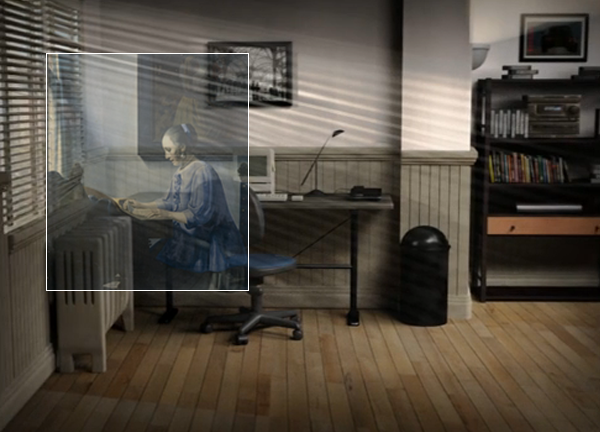
20th century Dutch art forger Han van Meegeren (d. 1947) painted Vermeers and others so convincingly, he duped buyers, including Netherlands officials, an estimated $30 mil (adjusted for today) dollars; most notable of his doings was selling one to Hermann Göring, for which he was arrested by the Dutch government under charges of “collaboration” with the Nazi party, and taken to trial. Ironically, his defense to charges against selling Dutch cultural property (i.e. Vermeer) to the Nazis was that Göring’s recent acquisition had been a forgery, hence not cultural property. Two wrongs, it seems, does make a right. Fortunately, Göring was at Nuremberg at the time and had bigger worries. At the last day of the ruling, even though charges had been dropped, the painter had a heart attack and was rushed to the hospital, at which he had another fatal one three days later. This may have been ringing around in William Gaddis’ mind when he wrote The Recognitions (1955), in which one Wyatt Gwyon realizes he can make more money forging Dutch masters than making originals. Gaddis’ indictment of what would be postmodernism worried itself in a classical context. Under this Faustian pact (the novel, a much shorter version, was initially conceived as a parody of Goethe’s Faust), he slowly loses his identity and completely disappears in the middle of the novel. Gaddis — smart, bitter, both repulsed and smitten by his society, obsessed with documenting its minutiæ — may have found a descendent in Larry David, whose relatively conceptually vigorous and poplulace-friendly shows Seinfeld and Curb Your Enthusiasm seem to me the funnier and perhaps existentially more dire version of a Sartrean “No Exit,” the former collaborators endlessly shouting at one another inside a room, free to simply leave, but never doing so (same goes for The Real Housewives series) — enter empowered and feminist-y Elaine Benes, loosely based off Richard Yates’ daughter Monica, who, in a twist which writes itself, Larry David once dated. When fiction is authenticated by real life, people are appeased, as if what we really wanted all along was the truth. Per the 65th episode in which Elaine brags about never having an orgasm with Jerry, we can only wonder who that inspiration was. A morose pessimist jackhammers his way to ecstasy in under two minutes, and a woman accompanies it with a forgery. Two wrongs, again it seems, does make a right.
Last night in NYC Literature: Erik Stinson and several business associates staring at [a very famous comic book creator] and [the most famous guitarist in early-2000s NYC garage rock] while enjoying a beverage the Playboy March Issue Release party – Boom Boom Room, Standard Hotel.


